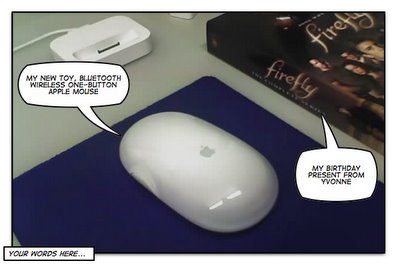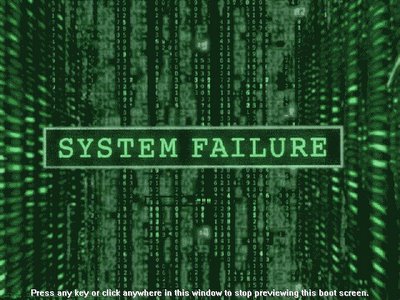 June 29th came and went. Both Apple and At&t had a very good day with sales of 200,000 phones on the first day, bringing in tons of new subscriber to At&t.
June 29th came and went. Both Apple and At&t had a very good day with sales of 200,000 phones on the first day, bringing in tons of new subscriber to At&t.The iPhone is slick, it's cool, it slices, it dices, and it'll clean your dirty laundry and cook dinner for you. It's everything a phone should have been in this day and age: a phone shouldn't crash (so far so good from various reports). A phone should store all your contacts. You should be able to get quick information from the web without tearing your hairs out. Most of all, a phone should do the phone thing really well.
However, being an apple product, we'd expect it to fly to the moon, bring in some cheese, and fix global warming while it's at it. All jokes aside, the initial version of Apple's entry to the mobile market did bring some disappointment for the ubber geeks, and here is a list of features I'd expect from apple in their following releases:
Current Integration of Phone activities with Mac OS X
 The current Mac OS X (10.4.10 tiger) spots a rather rich set of features for communicating with various bluetooth enabled mobile phones. Right out of the box, it can sync with your phone (isync), you can make dail or send and receive SMS (Short Message Service) to a number in Address Book. With third party software like salling clicker (very satisfied customer), I can even have my mac pause itunes on incoming call, and resume the music when the call is done (iPhone does this as well. My N70 pauses the music for my incoming call, but fails to resume for some reason).
The current Mac OS X (10.4.10 tiger) spots a rather rich set of features for communicating with various bluetooth enabled mobile phones. Right out of the box, it can sync with your phone (isync), you can make dail or send and receive SMS (Short Message Service) to a number in Address Book. With third party software like salling clicker (very satisfied customer), I can even have my mac pause itunes on incoming call, and resume the music when the call is done (iPhone does this as well. My N70 pauses the music for my incoming call, but fails to resume for some reason).That is all great, but these features aren't consistent over the various brands. For example, I can both send and receive SMS and have incoming call notification on my mac via the Sony Ericsson K510i, while only able to send SMS via Nokia N70. Nokia N70 Syncs contact photos as well, which K510i can't.
The inconsistency, largely due to each phone company's design philosophy, can drive you absolutely mad trying to find the perfect phone that will work with your Mac.
Integration, not just synchronization
iPhone is an apple product, and it should, out of the box, work with my Mac to do all kinds of amazing things that was previously known to enterprises with expensive call automation system installed. My mac will know that my iPhone is close, connect to it via bluetooth (my N70 and salling clicker does that currently). I can then, without taking my phone out of my pocket, sync my iPhone data, be notified of incoming calls and be able to answer them via my built-in microphone just like I did with Skype. In fact, I should be able to, through core audio or some apple API voodoo, be able to conference between parties on iChat AV, iPhone calls, and ultimately, skype.
My mac should be able to warn me that my iphone is running out of battery, just like my bluetooth mouse did. It should be able to obtain my attention data like the pages that I am currently browsing, so that I can sync and go and be able to continue reading webpages on my commute.
And then there is the automated security part. I should be able to set up my mac to see proximity of my iphone as a factor of authentication. This, of course, is a slippery sloop, but it's fun to just imagine the possibilities.
Most of what I talked about are actually available features of Salling Clicker, and with Apple Script I was able to quickly add to the featureset of the software. This is what I would ultimately be looking for in my iPhone v2.0. API in the form of Apple Script, widgets AJAX, or eventually Cocoa would open up all kinds of possibilities.








